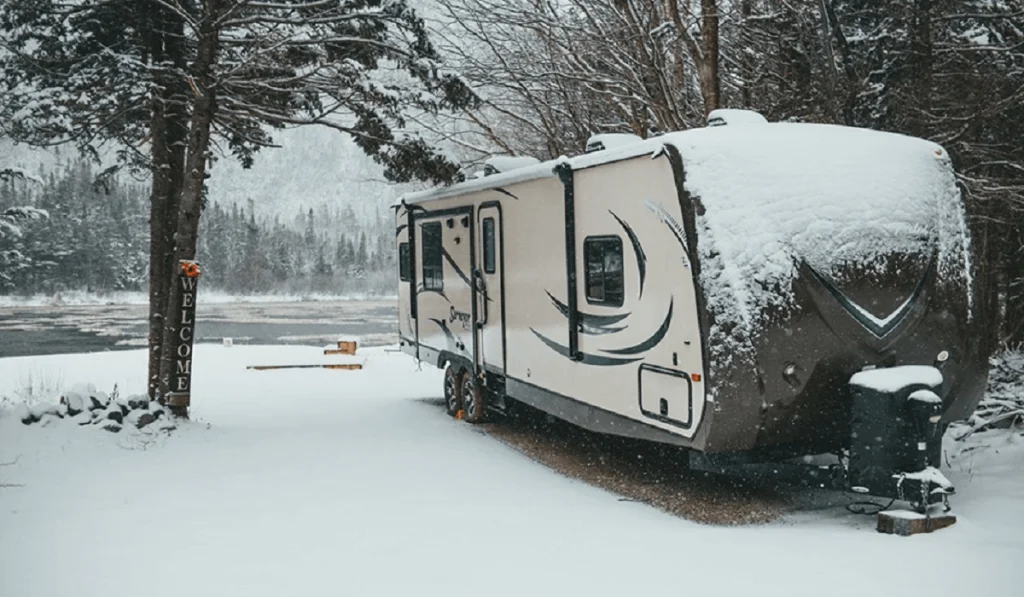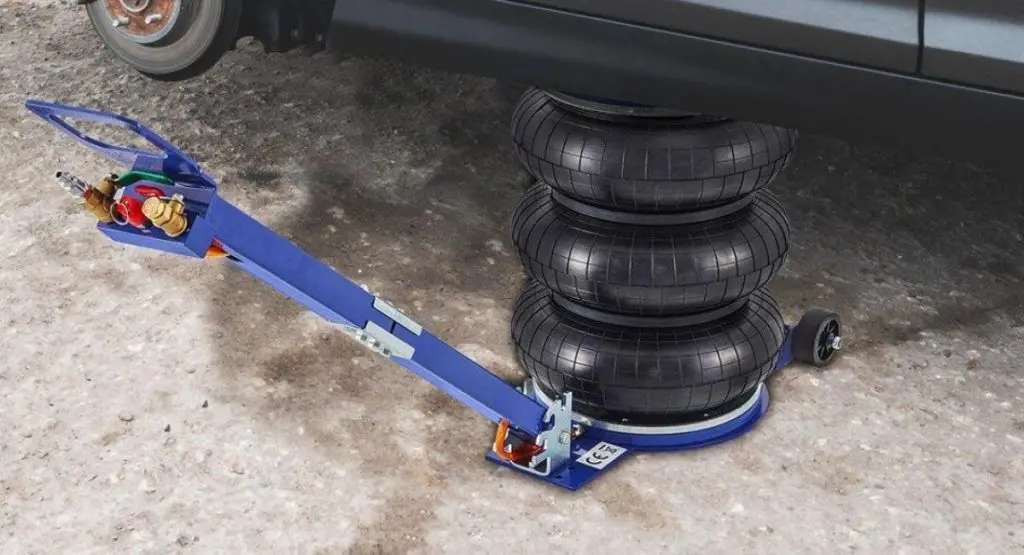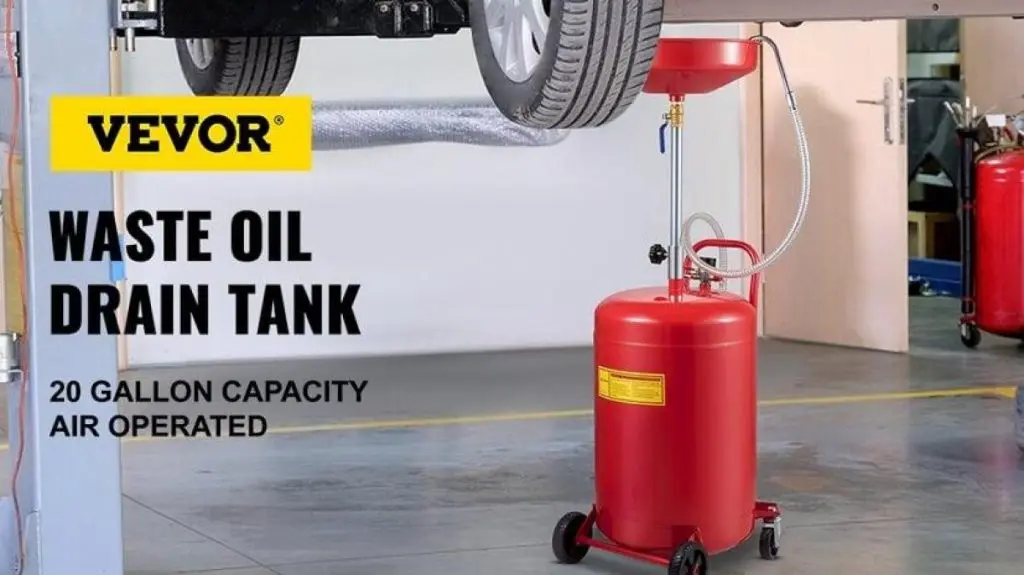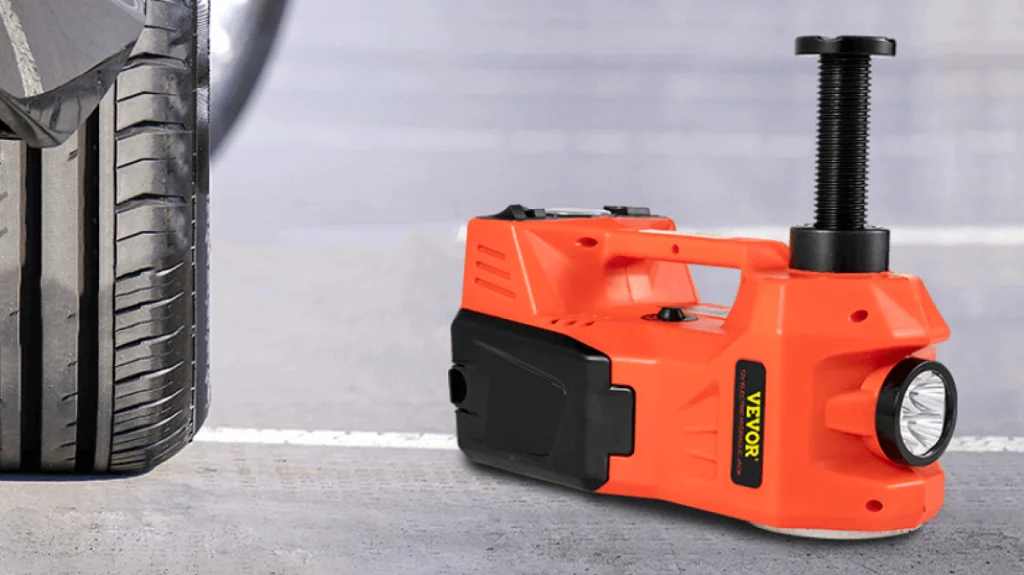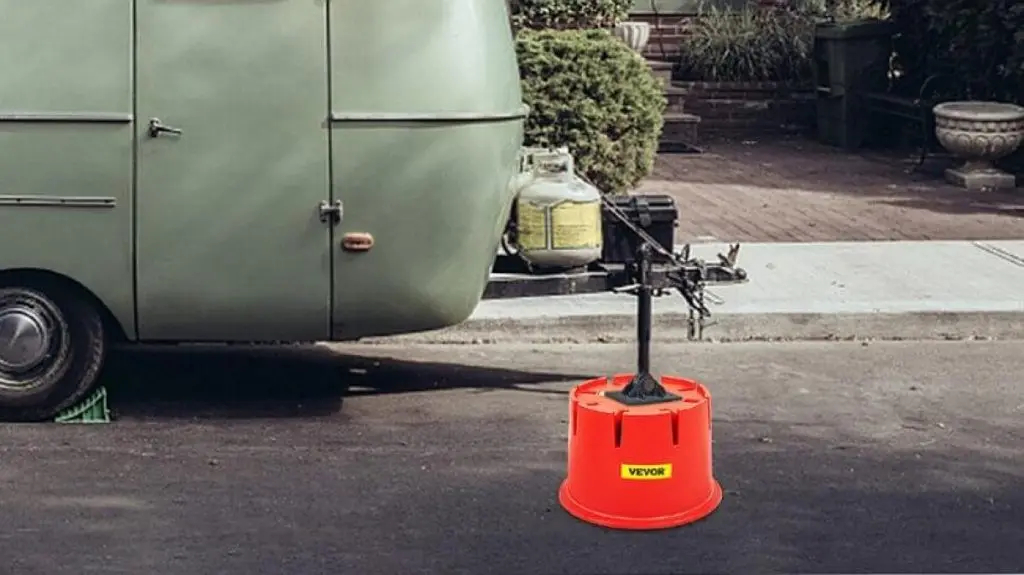As the summer comes to an end, days start to grow short, temperature drops, and the air turns crisp, marking the conclusion of the camping season. After savoring the joys of summer camping, as campers prepare to stow away their campers for the winter, a crucial step often slips their mind—winterization.
This failure to winterize the camper for the winter season presents owners with hefty repair and replacement costs as the next camping season rolls around.
So, if you do not want to be bogged down with the issues of busted or leaking water lines as the spring arrives, it is imperative that you winterize your RV before stowing it away for winter.
If you do not know how to winterize a camper, continue reading. In this comprehensive guide, we are going to discuss everything about winterizing campers. Before guiding you through the step-by-step process of winterizing a camper, we will list the necessary tools and supplies for effectively winterizing a camper. We will also share some insightful camper winter protection tips and address some of the FAQs about camper winterization.
So, let’s get winterizing!
But before delving into “how,” let’s first discuss the “why” part.
Table of contents
Why Winterizing Your Camper is Essential?
Winter might seem like a well-deserved break for your camper, but winter is the greatest challenge. If it’s not properly prepared, the freezing temperatures, snow, and ice can wreak havoc on your camper’s plumbing, appliances, and overall structure. Here’s why winterizing your camper is absolutely essential:
1. Preventing Freezing Damage
As temperatures plummet, any water left in pipes, tanks, and water heaters can freeze and expand, causing irreversible damage—cracks, burst pipes, and leaks. This can lead to costly repairs and even permanent damage to your camper’s plumbing system. Winterizing your camper is a proactive measure to safeguard these crucial components.
2. Avoiding Corrosion and Rust
Without proper RV winterization, it will be exposed to harsh winter elements without adequate protection, which can accelerate corrosion and rust. The moisture trapped inside your camper creates the perfect environment for corrosion. This can affect metal components, electrical wiring, and even the exterior paint and body. By winterizing the camper, you create a barrier that shields against these corrosive elements, preserving the structural integrity of your camper.
3. Preventing Mold and Mildew Growth
Trapped moisture, coupled with inadequate ventilation, can lead to mold and mildew growth in your camper, which can not only inflict lasting damage to the interior surfaces of your camper but also pose potential respiratory risks. A properly winterized travel trailer will proactively prevent mold growth in your camper, ensuring its interior remains intact and air-safe to breathe.
4. Protecting the Interior and Exterior of the RV
Beyond the exterior, the interior of your camper is also susceptible to the impacts of freezing temperatures. Besides leftover liquids freezing, expanding, and causing damage to plumbing fixtures, the freezing temperatures may also affect the integrity of adhesives and sealants. Similarly, the exterior of your RV is also susceptible to damage when not properly winterized—protected against harsh winter elements. You can prevent damage to your RV’s paint, seals, and overall exterior with appropriate coatings, covers, or treatments.
5. Financial Savings in the Long Run
Properly winterizing a camper may cost you a bit and take some of your precious time, but it goes a long way in extending the lifespan of your camper and saving you the potential costs of repairing or replacing damaged components.
In short, camper winterization isn’t just a recommendation; it’s a necessity. So, don’t delay – start your camper winterizing process today and ensure your camper is fully prepared to fight off the harsh winter elements.
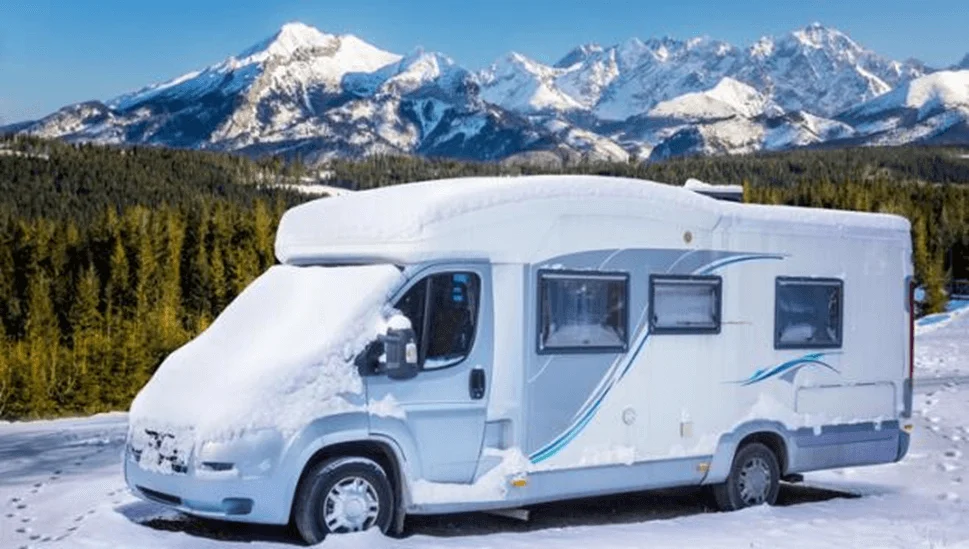
Necessary Tools and Supplies for Winterizing a Camper
Before embarking on your RV winterization journey, you’ll need to gather some essential tools and supplies for a smooth and efficient process.
Essential Tools
- Adjustable wrenches: For tightening and loosening various fittings.
- Pliers: For gripping and pulling hoses and other components.
- Screwdrivers (flathead and Phillips): For opening compartments and removing screws.
- Socket wrench set: For tightening and loosening nuts and bolts.
- Air compressor: To blow out water from the plumbing system.
- Tire pressure gauge: To check and adjust tire pressure.
- Gloves: To protect your hands from chemicals and cold.
- Safety glasses: To protect your eyes from debris and chemicals.
Essential Supplies
- RV antifreeze: Choose the type specifically designed for RVs. Make sure it is non-toxic, food-grade, and safe for RV plumbing systems.
- Drinking water hose: For pumping antifreeze into the water system.
- Water pump converter kit: Connects your air compressor to the water pump for blowing out water lines.
- Drain plugs and caps: To seal drained tanks and water lines.
- Petroleum jelly: To lubricate seals and prevent corrosion.
- Tape: To seal gaps and cracks around windows and doors.
- Camper cover: To protect the exterior of your camper from the elements while in storage.
- Rodent repellent: To deter rodents from entering your camper during storage.
- Moisture absorbers: To absorb excess moisture and keep your RV dry on the inside when it is in storage, preventing mold and mildew growth.
- Cleaning supplies: To clean the interior and exterior of your camper.
- Propane tank covers: To protect propane tanks from the elements.
- Wheel chocks: To prevent your camper from rolling while in storage.
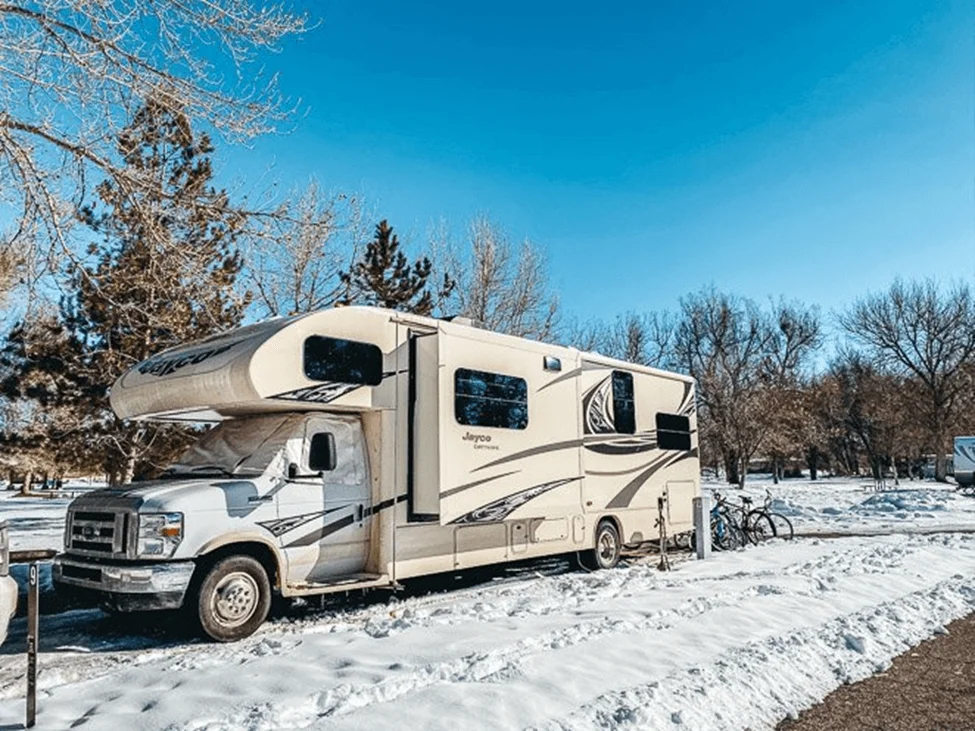
Step-by-Step Guide to Winterizing Your Camper, Travel Trailer, or RV
Whether you have an RV, Camper, or a travel trailer, the winterizing process is more or less the same.
1. Preparation
Do the following to ensure you are fully prepared for the winterizing process.
- Gathering supplies: Ensure you have all the tools and supplies listed above.
- Choose a Workspace: Select a well-lit and ventilated area for winterizing the camper. Providing shelter and ample space, a garage or covered driveway would be ideal.
- Disconnect from Utilities: Turn off and disconnect your camper from shore power, water, and sewer connections. This ensures safety and prevents accidental damage during RV winterization.
- Level Your Camper: Use leveling blocks to level and stabilize your camper. This is imperative for proper drainage of the plumbing system.
- Open Compartments and Doors: Open all compartments, cabinets, drawers, and doors for proper ventilation and to prevent the buildup of moisture and potential mold growth.
2. Draining Water Systems
Once you are all set up for winterizing, here is how you can drain the water system of any recreational vehicle.
- Locate Low-Point Drains: These are typically found underneath your camper and labeled accordingly. Consult your RV’s manual for their specific locations.
- Attach Drain Hoses: Connect a hose to each low-point drain and direct it to a suitable drainage area. Ensure the hoses are long enough to reach a safe disposal point without spilling.
- Open Drain Valves: One at a time, open each drain valve and allow the water to flow out completely. This includes the fresh water tank, black and gray water holding tanks, and the water heater. You might also have to open the pressure release valve on the water heater to drain the water that it holds in its tank.
- Flush Black and Gray Tanks: Fill your black and gray tanks with fresh water and then release them through the appropriate valves. Repeat this process several times until the water runs clear, ensuring all waste and debris are removed.
- Blow Out City Water Line: Attach a blowout plug to the city water connection with low-point drains open and faucets closed. Now, using an air compressor, apply low-pressure air of around 20 psi for a few seconds. This will push out any remaining water in the plumbing lines through the low-point drains.
- Blow Out Black Tank Flush Line: Following the same procedure, now blow out the black tank flush line.
3. Adding Antifreeze to the Water System
Once you have completely drained the water system, it’s time to add RV antifreeze.
- Bypass Water Heater: Consult your owner’s manual for specific instructions on locating and then bypassing your water heater. This allows antifreeze to flow through the system without unnecessarily filling the tank.
- Connect Siphon Line to Water Tank: Locate your water pump and then replace its freshwater intake line with a siphon line and insert the other end of the siphon line into the RV antifreeze gallon.
- Pump Antifreeze Through System: Ensuring all drain valves, except one, are closed, turn on the water pump, and check if pink antifreeze agent is coming out of that one open drain valve. After that, open each drain valve and faucet one by one and ensure that antifreeze is coming through all of them. Also, consider flushing the toilet with antifreeze until the water is pink.
Also, consider running antifreeze through the outdoor shower and any outdoor water quick connection that you may have. Once all is done, turn off the water pump, remove the siphon line, and reconnect the fresh water tank line to the pump.
Do not forget to put antifreeze into the P-Traps of sinks and tubs. This provides additional protection against freezing and cracking.
4. Protecting Exterior Components
By taking care of the water and filing antifreeze in the water system, you have winterized the plumbing system of your RV. Now, it’s time to take care of the exterior.
- Clean and Dry Exterior: Thoroughly wash and dry the exterior of your camper, removing any dirt, debris, or grime. This prevents the growth of mold and mildew and helps protect the paint and sealant.
- Apply a Coat of Wax: Applying high-quality wax to the exterior will provide a protective barrier against the elements, including UV rays, snow, and ice. This will make cleaning easier in the spring and keep your camper looking its best.
- Lubricate Seals: Apply a thin layer of petroleum jelly to all rubber seals, including door seals, window seals, and slide-out seals. This prevents cracking and freezing, ensuring a tight seal and preventing leaks.
- Cover Tires: While your tires may not need protection against elements, the wheel hub and bearing would certainly benefit from a cover against elements.
- Inspect and Repair Damage: Carefully inspect the exterior of your camper for any cracks, leaks, or other damage. Address any issues promptly to prevent further deterioration and water intrusion during winter storage.
5. Sealing Gaps and Cracks
Cracks and sealing gaps could compromise your RV winterization by letting the air, snow, and water into your RV and messing up the interior.
- Seal Gaps and Cracks: Carefully inspect the windows and doors of your RV and consider sealing gaps and cracks with weather-stripping, caulk, or another suitable sealant. This will prevent drafts, cold air intrusion, and moisture accumulation inside your camper.
- Protect Vents and Openings: Cover all vents and openings, ensuring no snow or rodents enter your camper.
6. Preparing the Interior
Do the following to prepare the interior of your RV for extended winter storage.
- Empty and Clean Compartments: Remove all food, beverages, personal belongings, and other items from all compartments, cabinets, drawers, and storage areas. And make sure they are squeaky clean. Also, consider cleaning and disinfecting all surfaces inside your camper.
- Place Moisture Absorbers: Strategically place commercially available moisture absorbers throughout your camper, especially in areas prone to moisture accumulation. These will help absorb excess moisture and prevent the growth of mold and mildew.
- Disconnect and Store Batteries: Disconnect the batteries from your camper. This prevents them from draining and ensures they are ready for use when you take your camper out in the spring.
7. Storing Your Camper:
Your camper is all winterized. Now it’s time to put it away for the winter.
- Choose a Secure Location: Ideally, store your camper in a covered, well-ventilated location. This could be a garage, a covered carport, or a dedicated RV storage facility.
- Install Wheel Chocks: Place wheel chocks on the tires to prevent your camper from rolling during storage.
- Cover Your Camper: Use a breathable camper cover designed to fit your specific camper model. This protects the exterior from the elements, including sun, wind, rain, snow, and ice. If you do not have a cover for your camper, check out VEVOR Travel Trailer Cover. Featuring 4-layer non-woven fabric, this cover is waterproof, windproof and wear-resistant.

Additional Camper Winter Protection Tips
While the steps outlined above provide a thorough guide to winterizing a camper, here are some additional tips on winterizing an RV:
1. Protect the awnings and slide-outs: fully retract them and apply a silicone lubricant to prevent rust and ensure smooth operation. Also, seal the edges of the slide-outs.
2. Strong pest defense: Besides blocking all possible pest entry points, consider strategically placing pest rodent repellents in various locations inside and outside the RV. And don’t forget to place mothballs in closets and drawers.
3. Check on Your Camper Periodically: Throughout the winter, periodically check on your camper to ensure it is safe and secure. Look for any signs of damage, leaks, or pests, and address any issues promptly.
4. Raise the camper off the ground: You can elevate your camper slightly using jack stands or blocks, reducing tire flat spots. Instead of using a block, it is best that you use stabilizer jacks to lift and level your RV. If you do not have jacks in your gears, check out these VEVOR Single Screw Jacks. Manufactured with aluminum alloy and galvanized steel, these jacks are resilient against impacts, wear, and tear.

FAQs about Camper Winterization
Q: How do you winterize an RV without antifreeze?
The process of winterizing an RV without antifreeze is the same, except that you do not put antifreeze through the plumbing system after draining it. While RV winterization without an antifreeze might work in mild temperatures, for freezing temperatures, you must use antifreeze.
Q: Is winterizing the RV necessary?
Yes, winterizing an RV is absolutely necessary to save it from harsh winter elements and prevent the water system from freezing, which could cause serious damage.
Q: How cold is too cold for an RV?
Though RVs vary in cold tolerance, temperatures ranging from -19°F to -25°F are typically considered too cold.
Q: Do you leave faucets open after winterizing?
Yes, leaving faucets open after winterizing is generally recommended. RV enthusiasts are divided on this, but it’s often advised to keep faucets open. Pink antifreeze used in the RV winterization process can expand slightly when temperatures drop below freezing. Leaving faucets open provides an outlet for this expansion, reducing the risk of damage to water lines caused by frozen antifreeze.
Conclusion
Winterizing your RV may seem like a daunting task, but by following the detailed steps and helpful tips provided in this comprehensive guide, you can ensure your beloved vehicle is safe and secure throughout the winter months. From draining water lines to protecting exterior components and preparing the interior, each step plays a vital role in preventing costly damages and ensuring that your RV is up and running come spring.
Remember, investing a little time and effort now will yield significant benefits in the long run. Your camper will be ready for new adventures when the warm weather returns, allowing you to create lasting memories without worrying about potential problems caused by improper RV winterization.
So, gather your supplies, roll up your sleeves, and follow this guide to confidently winterize your camper.

